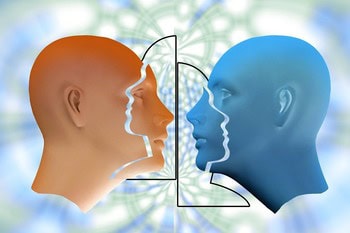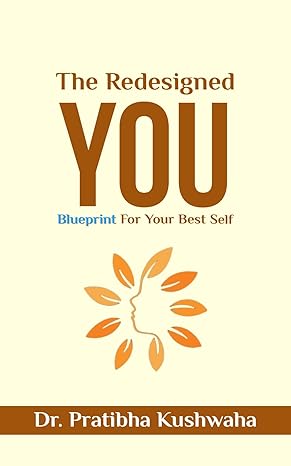Have you ever wondered why different people react differently to the same situation? Or why some individuals seem to navigate life’s challenges with ease while others struggle? The answer lies in the fascinating realm of personal internal representation and the profound impact it has on our state of mind, actions, and ultimately, our entire personality.
In this blog post, we’ll explore the intricate process of how our brains filter and interpret information, and how this shapes our reality. We’ll also discuss practical ways to harness this knowledge to improve our lives by consciously shifting our mental states.
The Filters in Our Brain
Our brains are constantly bombarded with an overwhelming amount of information from our five senses. To make sense of this data deluge, our minds employ three primary filters: distortion, deletion, and generalization. These filters help us process information efficiently, but they also significantly alter the original input.
As I discussed in my earlier video on filters in our brain, the information we get through our five senses gets changed. This change occurs due to pre-existing factors, namely: beliefs, values, decisions, past experiences, memories, physiological state, and meta-programs.
The process works like this:
- Distortion: We change or twist information to fit our existing mental framework.
- Deletion: We unconsciously ignore certain details that don’t align with our expectations or seem irrelevant.
- Generalization: We draw broad conclusions based on limited experiences.
The Personal Internal Representation (PIR)
When an event occurs (let’s call it E1), it goes through these filters and is transformed into our personal interpretation of that event (E2). This process is what we call Personal Internal Representation (PIR).
It’s crucial to understand that E1 ≠ E2. The original event and our interpretation of it are not the same thing. This discrepancy explains why ten people can witness the same event and come away with ten different interpretations.
For example, imagine a group of friends watching a suspenseful movie. One person might find it exhilarating, another terrifying, and yet another might be bored. The movie (E1) is the same, but each person’s interpretation (E2) varies based on their unique set of pre-existing factors.
The Mind-Body Connection
Now, let’s take this concept a step further. Have you ever noticed how your body language changes with your mood? When you’re happy, you might stand tall, smile, and gesture enthusiastically. When you’re sad, you might slouch, frown, and move slowly.
This observation reveals a fundamental truth: our state of mind is directly proportional to our physiology, and vice versa. This bidirectional relationship is key to understanding how we can influence our mental state through physical actions.
Some examples of this connection include:
- Smiling when you’re happy vs. frowning when you’re sad
- Standing tall and confident when you’re feeling self-assured vs. hunching over when you’re insecure
- Speaking quickly and animatedly when you’re excited vs. speaking slowly and softly when you’re tired or upset
The Cascade Effect: From Perception to Personality
To truly grasp the power of PIR and its impact on our lives, let’s examine the cascade effect it creates:
- Information (through five senses) → Personal Internal Representation (PIR)
- PIR → State of Mind
- State of Mind → Actions/Body Language
- Actions → Behavior
- Behavior → Habits
- Habits → Personality
This sequence illustrates how our interpretation of events ultimately shapes our entire personality. It’s a powerful realization because it means that by consciously altering our PIR or our actions, we can influence our overall state of being.
Resourceful vs. Un-resourceful States
Our mental states can be broadly categorized into two types:
- Resourceful States: These are positive, empowering states characterized by happiness, energy, enthusiasm, and other constructive emotions.
- Unresourceful States: These are negative, limiting states marked by sadness, anger, jealousy, and other detrimental emotions.
It’s evident that we function best when in a resourceful state. We’re more productive, creative, and resilient. So, why do we ever allow ourselves to remain in unresourceful states?
The answer often lies in habitual patterns of thought and behavior that we’ve developed over time. However, armed with the knowledge of how our PIR influences our state of mind, we can actively work to shift from unresourceful to resourceful states.
Practical Strategies for State Change
Here are some effective ways to transform your unresourceful state into a resourceful one:
- Change Your Physiology: Remember the mind-body connection we discussed earlier? Use it to your advantage. Stand up straight, put a smile on your face, and move with purpose. Your mind will often follow suit.
- Alter Your Focus: Our PIR is heavily influenced by what we choose to focus on. If you’re feeling down, consciously redirect your attention to something positive or inspiring.
- Adjust Your Language: The words we use, both in our internal dialogue and external communication, shape our reality. Use empowering language to describe your experiences and feelings.
- Reframe the Situation: Challenge your initial interpretation of events. Ask yourself, “Is there another way to look at this?” Often, a shift in perspective can dramatically change your emotional response.
- Use Visualization: Imagine yourself in a resourceful state. Engage all your senses in this mental image. Your brain often can’t distinguish between a vividly imagined experience and a real one.
- Practice Gratitude: Regularly focusing on what you’re grateful for can shift your baseline state to a more positive one.
- Change Your Personal Internal Representation: By consciously altering how you interpret events, you can directly influence your state of mind.
The Power of Choice
Understanding the concept of Personal Internal Representation empowers us with a profound realization: we have a choice in how we interpret and respond to the world around us. While we can’t always control external events (E1), we have significant influence over our interpretation of those events (E2).
By consciously working to create more empowering interpretations and actively shifting our physiology and focus, we can cultivate more resourceful states. Over time, this practice can lead to positive changes in our behaviors, habits, and overall personality.
Conclusion
The journey from external event to internal representation to state of mind to personality is a complex one, influenced by numerous factors. However, by understanding this process, we gain the ability to intervene at various points along the way.
Remember, your perception shapes your reality. By taking control of your Personal Internal Representation and consciously choosing more resourceful states, you’re not just changing your mood – you’re reshaping your entire experience of life.
We work best in resourceful states, so why should we ever stay in unresourceful states? The next time you find yourself in an unresourceful state, pause and ask yourself: “How can I shift my perception or actions to create a more empowering interpretation of this situation?” With practice, you’ll find yourself naturally gravitating towards more resourceful states, leading to greater happiness, productivity, and fulfillment in all areas of your life.
By understanding and applying these principles, you can take control of your mental state, your actions, and ultimately, your life. Remember, the power to change your experience of reality lies within you – in your ability to shape your Personal Internal Representation and choose resourceful states. Start practicing today, and watch as your life transforms in positive and empowering ways.


